
Иван Милев
A rare and interesting study by Evdokia Peteva Filova, wife of the slain in 1945 Bulgarian prime minister Bogdan Filov.
More...We kindly inform you that, as long as the subject affiliation of our 300.000+ articles is in progress, you might get unsufficient or no results on your third level or second level search. In this case, please broaden your search criteria.

A rare and interesting study by Evdokia Peteva Filova, wife of the slain in 1945 Bulgarian prime minister Bogdan Filov.
More...
In the history of composition and performance an interesting and multiplot chapter of musical changes opens, together with development Romantic epoch. Then a different from the current concept of a piece of work is being born. The work, which reaching for various inspirations, is slowly turning away from classical, formal and melodic and harmonic formula and is heading for virtuosity. Musical findings of that period would not have been possible without specific trends and composing tendencies being pointed out in the early stage of the Romantic period. Among those a special place was reserved for brillant style. This technique joined formal elegance and beauty of Italian bel canto style with harmonic enriching and virtuosity, created on the basis of sentimentalism, became a bridge between Classicism and music 19th century.Trying to catch the essence and evolution of brillant style, nineteen cen-tury’s and contemporary researchers have been basing on analysis of great European composers, slightly neglecting this phenomenon within smaller e.g. national areas. Some Polish researchers, touching the issue, limited it only to a description of the problem, focusing just on one composer and they did not extend their study onto works of other Polish early Romantic musicians. Thus there is a gap around brillant style embracing heritage of tal-ented composers of the period of partitions, Warsaw Duchy and Polish Kingdom, who despite being remote from European music centre tried to follow its traces. Combining what was Polish and national with contemporary composing fashion, they created some interesting and worth analysing works, which are research material for the present thesis. A ‘blank page’ in the description of this piece of Polish music history makes one put questions: firstly, if and to what extend creation of local composers included some features oh widespread on the West trend for virtuosity interweaving with affectionate lirysm and secondly, how to perform and interpret works written by Polish creators according to rules of brillant style.The stimulus to undertake scientific consideration on ‘Polish’ brillant style was for the author only Chopin’s works. The studies on them initiated the process of searching for other but similar compositions by musicians creating just before or together with the great composer. These actions resulted in rediscovery of plenty oh interesting information about works by early Romantic composers, who have not been too famous so far. These mu-sicians, similarly to Western European ones, performed daring technical shows, joining them with melodious parts. In Polish works, following brillant style, we can observe domination of figuration, ornamentation and a principle of alterative use of deeply lyrical and exceptionally virtuoso moments. This combination revealed musical and professional mastery of a performer, which was particularly noticeable in piano, violin and chamber literature.The research of some compositions oh Warsaw composers mainly, al-lowed to describe the brillant style phenomenon, which has become the aim of the present thesis. A special place is here occupied by analysis of some works by Maria Szymanowska (Nocturn in B major), Ignacy Feliks Do-brzyński (Grand Trio in A op. 17) and Fryderyk Chopin (Fantasy on Polish Airs in A major op. 13), whose recorded on the enclosed record performance, is an integral part of the presented ‘description of a piece of art’.An attempt of doing a research and creating an in-depth description of the topic has determined the lay-out of the work. In the first chapter, the author made closer to a reader the phenomenon of the brillant style in historic and cognitive context. She has framed the epoch background, where based on the changing philosophy and new social structures, a profession of a virtuoso-composer was being born. This part of thesis was devoted to a description of oeuvre of leading European composers, who willingly and with great deter-mination created ‘brillant’ works. The author focused also on, resulting from composing fashion, problem of changes in, popular then, types of instrumen-tal miniatures and soloist concerts. She has also gave her account of Johann Nepomuk Hummel’s – the doyen of the brillant style – work, in which he framed formal, technical and esthetical guidelines of the presented style. In the first chapter she described all the collected information about the de-scribed stylistics, revealing some significant negligence in researches of Polish early Romantic brillant current.Based on earlier opinions and definitions, in the second chapter, a pic-ture of fashions and composing tendencies of the 19th cent. Polish music salon has been presented. Introducing political, cultural and social unique-ness of Poland of the turn of the 18th and 19th century, the author described composing experience of popular, among whom we may find Józef Elsner, Franciszek Lessel, Józef Deszczyński, Józef Krogulski, Antoni Kątski, a vio-linist – Karol Lipiński and Henryk Wieniawski. Next, analysing in detail some compositions, the author emphasised achievements of the most inter-esting (according to her) artists: Szymanowska, Dobrzyński and Chopin. The choice came from searching and comparing elements of brillant style in possibly various genres – from early miniatures through chamber forms up to concert pieces. Putting the works together allowed to show not only stylis-tic development from its modest use to ideal symbiosis of virtuosity and lyrical and sentimental motives opening the way for the mature Romantic period, but also to distinguish features which make Polish brillant style dif-ferent from European compositions. Probably as an effect of complex Polish political situation and coming with it need to kindle Polish national spirit, Polish music of this period is full of national and folk references.A detailed analysis of works by Szymanowska, Dobrzyński and Chopin allowed to notice how together with the development of the brillant style it came to quoting of native melodious expressions. Works by Szymanowska, which followed gentle salon character, show the beginnings of virtuoso stylis-tics, which strongly absorbed national elements only in Dobrzyński’s and then Chopin’s works. Of course, a crowning achievement of this tendency became the virtuoso Fantasy op. 13 by Fryderyk Chopin, which was to stay forever almost symbolic image of early Romantic composing fashions and a founda-tion stone of Romantic national schools. Presenting by the author almost unknown so far Grand Trio op. 17 by Dobrzyński, has become big contribu-tion to discovery of forgotten works by Polish composers. Its detailed analy-sis allowed to trace the way in which composers implemented brillant style to piano chamber compositions and made allusions to traditional national motives. In four-part composition by Dobrzyński’s even fragments use char-acter of popular Polish dances – mazur i krakowiak. The second chapter which is entirely devoted to Polish compositions unfolded a wide perspec-tive onto music of early Romantic Polish salons, which were dominated by piano brillant style and joined virtuosity and lyrism as well as quotations from national melodies. The last chapter made an attempt to answer the question how to interpret and perform Polish works in brillant stylistics. The author was searching for this in statements by Chopin himself and also in his stu-dents’ recollections. The conclusions were confronted with some remarks of another great Romantic virtuoso – Ferenc Liszt. Quoting opinions about ways and methods of playing of two so distinguished European representa-tives of virtuoso current allowed to have broader perspective on performance aspects of brillant stylistics. Seeking a way of, the closest to early Romantic epoch, interpretation of here described works, the author reached for the concept of intertextual interpretation by Mieczysław Tomaszewski and Irena Poniatowska’s point of view. These researchers claim that a piece of art is somehow a mirror of the times in which it was created. This conclusion makes one focus on early Romantic writers’ remarks, so that after analysis of all of the factors making up for the interpretation, such as beauty of the sound, phrasing or pedalisation, it was possible to quote in the summary a concluding opinion by Chopin himself: ‘The simplicity is the top. Having overcome all the difficulties, played thousands of notes, you come to charm-ing simplicity being the top of arts’ (Op. cit. J. Eigeldinger, Chopin in the eyes of his students, Cracow 2010, p. 80).Framing of the epoch, leaning over early Romantic developments of Polish music salons and meticulous research of some pieces by Szymanowska, Dobrzyński and Chopin, paying special attention to finding and defining elements of brillant stylistics, allowed the author to prove that in Poland at the turn of 18th and 19th century a virtuoso composing trend was developing. This trend was able to work out its own, innovative features compared with Western music. Taking into account time, subject and spatial scope of the work, based on critics of the sources, analysis of accessible heritage of mentioned above creators and pianistic experience of the most distinguished virtuoso-composers, the author proved the existence of a very interesting current and valuable Polish music literature of the end of the 18th century and the beginning of the 19th century, which was wrongly forgotten for such a long time.
More...
The present volume is a delayed edition of a manuscript which was born one hundred years ago, on the Collection of Coins and Antiques of the Transylvanian Museum Society (TMS).Founded in 1859, the TMS was conceived as a replica of the Transylvanian Hungarian society against the neo-absolutist regime, established following the defeat of the Hungarian revolution and fighting for freedom of 1848–1849. Its objective was the salvation, conveyance to the public and scientific analysis of natural and inherited man-made treasures. This noble intention was marked by the establishment of a library, a natural collection, and also a collection of coins and antiques.On the fiftieth anniversary of the TMS, Béla Pósta, professor at the archaeology department of the university and also the manager of the collection of coins and antiques, was asked to present the history and background of the collection he was entrusted with. The invitation was sent at the beginning of 1909 and a year later the manuscript, together with its addenda, was ready to be printed. The publication did not take place however, initially because of a lack of funds and later because of the start of WWI and the political changes that followed this. The manuscript was recently discovered in the archives of the TMS and brought to the attention of those who were interested by Professor Csetri Elek. Although delayed, the publication of the manuscript is motivated by the fact that it is the most comprehensive presentation of the collection and is therefore a reference work for those who are going to come into contact with the past of the museum movement of Cluj and of Transylvania.The history of the collection, which takes up more than half the manuscript, is divided into three shorter periods. Although the initial offers and donations arrived later, the first period (1862–1872) is calculated from the time when Henrik Finály was elected custodian of the collection of coins and antiques; he was charged with organising the collection, which in the meantime became independent. The 25 year long second period, which lasted from 1872 to 1898, was dominated by the takeover of the management of the collection by the recently established university, though this did not compromise the TMS’s ownership of the collection. From that moment on, the pieces of the collection were used in the educational process as well as in obtaining new sources of income, which were used to enrich the collection.The re-housing of the collection, caused by the start of construction work on the ornate new university building, and the death of Finály in 1898 threatened the double collection with a Cinderella-like destiny, but the third period, the next 10 years (1899–1909), which began with the appointment of Pósta, marked the renaissance of the collection. This was a decade of growth and spiritual excitement, its benefits increased vertiginously in the next five years, until the start of WWI. The second half of the manuscript is richly illustrated and presents the objects of the collection in historical order and also catalogues them according to where they came from. Among the acquisitions of the Finály period a number of pieces stand out; the Zsófia Torma collection from Turdaş followed by the Greek helmet discovered at Uioara, the Roman funeral statue (mother and child) from Potaissa, appendages from the princely tomb (Omharus) in Apahida and Albert Bíró’s collection of majolica. During the Pósta period the collection grew constantly by buying valuable new objects (the little bronze statue of Venus from Potaissa, tankards, the altars from Jimbor and Guşteriţa and oriental carpets), and thanks to donations and deposits (vestments and paintings by Hungarian contemporary artists).However, thanks of their scientific value, the most important additions were the acquisitions that came from the archaeological excavations initiated by the new curator (at Iclod, Balsa and Sântana de Mureş), as well by ethnographic collections (fishermen’s tools, embroideries). Among the most recent acquisitions the manuscript mentions are the bronze finds from Uioara, bought in 1909, and the contents of the tombs which came from the migration era cemeteries of Târgu Mureş, excavated in 1909–1910. The Egyptian mummy, which was received in December 1909, was omitted from the list, perhaps because it was not possible to include it with the monuments of Transylvanian history, the basis of the collection. It is clear that the discoveries made in 1910–1911 at the Turdaş, Valea Nandrului, Cioclovina and Cluj excavations, and which substantially modified knowledge of the Paleolithic and Neolithic in Transylvania, and also the period of the Hungarian establishment, remained out of the presentation.The description of the coin collection is missing from the manuscript. István Kovács, Pósta’s disciple, was asked to write this since he was assigned to supervise the collection. The title of the mentioned study appears in a contemporary enumeration of his speciality works, but only an extract of it was published, being the introduction of an article in which is described the jubilee plaque of the TMS. The original manuscript did not come down to us.In the present publication, in the annex of Pósta’s work, one can find Kovács’s article, and thus the reader can get a fairly accurate image of the double collection a hundred years ago. A second annex offers another unpublished manuscript by Pósta, which has the text of the conference dedicated to the presentation of the above mentioned plaque. Most of the pictures are publications of the images selected by Pósta, though a few missing photographs were replaced from other sources. Included in this category is a published image of the plaque, as well as two photographs of some pages from the manuscript dedicated to the double collection.The original manuscripts, and also most of the pictures in the present publication, are in the National Archives, Cluj County Department. After the dissolu tion of the TMS, at the start of the communist regime, its collections were taken to different state run museums in Cluj, but the most valuable pieces were taken to Bucharest. Following the collapse of the dictatorial regime, the Transylvanian Museum Society is still waiting for the restitution of those spiritual items it was deprived of in dark times.
More...
In this volume I discuss the intermediality of visual poetry can correlate with the ideologies and projects of various movements but not as their unproblematic translation into the sphere of artistic practices. Consequently, I examine these movements as ideological constructs having their own (self)contradictions, revealing at times discrepancies between the declared projects and the concrete artistic results.In the volume I discuss three specific figures of visual poetry – concrete and lettrist poetry and collages – in three different chapters due to the fact that these figures can be related to different historical contexts and display different imagetext relations.Concrete poetry (e. g. poems by Gomringer, Heisenbüttel, de Campos, Kolár) can be perceived as an attempt to extend the limits of language, to reveal both the verbal and the non-verbal conditions of reading. In concretism language does not appear as purely conceptual but as an embodied language, whereas reading is not a medially homogeneous practice but is shaped by the iconicity of the text, by the sensuality of writing and the ”silent”, non-discursive spaces between words. From the perspective of image-text relations, figurative concrete poetry tends to display a shift from naming and convergence towards divergence by scattering the correspondence between word and image (which can be related to the modernist experience of losing the common system of reference between words and things). In non-figurative concrete poetry the shaping of the typographic space, the non-linear distribution of writing, the combination and variation of linguistic elements are meant to foreground not the referentiality but rather the materiality of language.In lettrist poetry and in typograms (e. g. the works of Isou, Broutin, Szombathy, Géczi, Tandori, L. Simon) the non-semantic use of writing as visual material seems to extract even the last verbal elements from the process of reading, apparently replacing the problem of medial heterogeneity with that of monomediality.Although lettrist poems minimize the linguistic elements and foreground the physical aspects of language, they do not exclude the verbal dimension altogether.Hypergraphics as a mode of writing suggested by lettrist authors, combines different sign-systems evoking in this way the cultural memory of writing: from pictograms to mathematical signs, from iconic signs to the latin alphabet, from drawing to calligraphy. Another argument in favour of intermediality could be that lettrist works are prepared, announced, justified by poetic manifests and theoretical discourses which actually function as discursive pre-texts for the works themselves. (Referring to abstract painting, W. J. T. Mitchell speaks about a similar problem, namely the interdependence of theory and painting, which he calls ut pictura theoria.)In the collages of visual poetry (e. g. the works of McCaffery, Géczi, Zalán, Szombathy) both texts and images appear as fragments from larger contexts: from literature and painting to science and mass-media, from the anonymous found objects to the cultic products of culture. In collages the use of words and images becomes a contextual practice, more precisely a confrontation of different contexts.We can observe the eruption of images in the sphere of verbality (and vice versa), which marks an important difference between the perception of language in collages and the concretist concept about a decontextualized language, purified of referentiality. This impurity and medial heterogeneity of collages can expose the ideology and the contradictory aspect of certain modernist tendencies to purify the medium of language or painting to get to its essence.The above-mentioned figures of visual poetry can become the antecedents of certain intermedial practices in the digital medium. I discuss the way digital texts become flexible or even unstable, offering the readers the possibility to alter or recreate images and texts. In some texts the iconic-calligrammatic aspect which is based on a static, compositional correspondence can be replaced by correspondences between different temporal processes and performative acts. Those texts and multimedial installations which involve the human body in the process of reception expose the act of reading and communication as an embodied and not entirely discursive practice.The study of intermediality has made clear that the relation between texts and images is not relevant only from the perspective of mediality. More precisely: neither the problem of mediality can be restricted to technical and material aspects, but extends to the symbolic practices, the ideological and institutional contexts of the medium. Thus, collages do not only combine texts and images but also display a reflexive (or at times critical) attitude towards tradition and different cullural phenomena by confronting canonical and marginal, artistic and non-artistic discourses.In concrete poetry not only the image-text relation is raised as a problem but also the discursive and medial conditions of seeing and meaning-making.Although from the perspective of cultural criticism some works of visual poetry are considered a ’weak’ self-referential discourse, I would still emphasize the critical potential of reflecting on the medium and intermediality. Ideological constructs can be questioned precisely by revealing their constructedness, as well as their institutional, discursive and medial conditions. Intermediality as a critical practice and the capacity of intermedial phenomena to displace homogeneous discourses and institutional or disciplinary practices can show us that intermediality is not only the name of a (stable) relation between words and images but a continuous question and challenge.
More...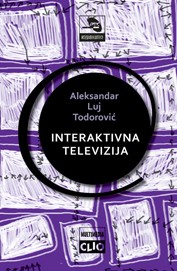
Knjiga Interaktivna televizija pregled je razvoja interaktivnih usluga od serije američke mreže CBS Vinki Dink i mi iz pedesetih godina dvadesetog veka, preko teleteksta i Berove igre Pong, do današnjih sofisticiranih digitalnih interaktivnih usluga, virtuelnih zajednica, telemedicine, korišćenja dva ekrana, izazova koje nudi digitalno interaktivno oglašavanje. Ova studija ukazuje na programski značaj ovih usluga analizirajući tehnologiju na kojoj su one zasnovane. Knjiga Interaktivna televizija dolazi u pravom trenutku jer nudi odličan uvid u najnoviji razvoj u ovoj oblasti i olakšava razumevanje interaktivnosti koja već danas pretvara televiziju u novi i znatno bogatiji elektronski medij, čija se vrednost sve više određuje upravo popularnošću i pouzdanošću dodatnih usluga koje može da ponudi.
More...
We live in a dialogical world, where models – either active or latent – establish the configuration of our identity constructs and of our intellectual framework. It is hence impossible to clarify, within the limits of one colloquium, the entire spectrum of issues entailed by this complex topic, which already gathers together a myriad of interpretations under its umbrella. While excluding the mythicizing attitude on the French cultural model, we can clearly state that its spirit, along with the Greek and Roman ones, is immanent to the European and universal cultural landscape, thus contributing to the coherence of their forms. The three volumes of scientific research in the series of Identity constructions. Echoes of the French cultural model in a European and universal context are illustrative of this fact. At its first edition, this colloquium hopefully inaugurates a wonderful and long-lasting tradition. The papers presented during this event will reach the interested audience via these volumes that have benefitted in time from new contributions, which directly or indirectly reflect the impact of the driving models. Our purpose was to provide plenty of exposure space to all the contributors who were interested in this topic. This publication aims to promote an interdisciplinary approach of certain issues that are in the contact zone between linguistics and literature, and beyond, via multiple perspectives in various national, multilingual and international contexts. Structured in three volumes, Literature, Literature & cultural Studies; Linguistics & Teaching Methodology, the series aims to be a means of cultural contact, academic dialogue, open to not necessarily convergent ideas.
More...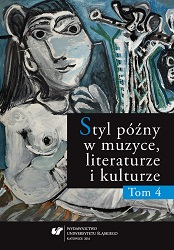
Dwa kolejne tomy, trzeci i czwarty, Stylu późnego w muzyce, literaturze i kulturze są zapisem wykładów wygłoszonych na konferencji zorganizowanej w 2014 roku przez Akademię Muzyczną w Katowicach i Uniwersytet Śląski. Było to już trzecie spotkanie z cyklu „styl późny”, które zgromadziło muzykologów, teoretyków muzyki, literaturoznawców, historyków sztuki, kulturoznawców i filozofów. Problematyka obydwu publikacji dowodzi, że zjawiska „późności” i „schyłkowości” wciąż budzą wiele kontrowersji, nie poddają się jednoznacznym klasyfikacjom i opisom.W tomie czwartym pomieszczono artykuły dotyczące zagadnień stylu późnego w kulturze europejskiej XX wieku. Wśród poruszonych tematów, widzianych przez autorów poprzez pryzmat stylu późnego i „późności”, znalazły się: dzieła filmowe Langa, Leana i Kurosawy, twórczość kompozytorska Blocha, dzieła Iwaszkiewicza w kontekście inwariantnego modelu Tomaszewskiego, elementy stylu późnego w dojrzałej twórczości Sikorskiego, schyłkowy modernizm w utworach Ptaszyńskiej, teologia wydarzenia Caputo jako przykład schyłkowości postsekularyzmu, wielowymiarowy proces zmian, zwłaszcza ekonomicznych i społecznych, w Liverpool, fascynacje stylem późnym w literaturze, muzyce i sztuce, transformacje stylu kompozytorskiego Andrzeja Panufnika, zagadnienie teodycei w Błaznach Barry’ego.
More...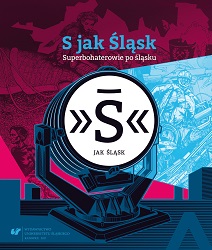
The publication comprises illustrations drawn and texts written by Marek Głowacki, which were created as a part of an artistic project “Dial S for Silesia – Silesian-Style Superheroes.” It includes a series of comic-book illustrations depicting characters bound to the region of Silesia, in particular Cieszyn Silesia being a place to which the author has both personal and professional ties. What can be found in the book are over thirty drawingsexecuted in comic-book fashion, created using digital and traditional methods, and published in a form of an artist’s book. The characters depicted are based on reallife Silesians whose achievements put them on a par with superheroes in a broad sense of the word. Głowacki’s way of engaging us into lives of the figures in question is embedded in a tradition of the black-and-white comic-book imagery. Their attainments are showcased by singular, detail-rich illustrations. In addition to drawings the publication contains the author’s text on comic book as genre and drawings as such, as well as passages concerning the specificity of the region and the superhuman nature of Silesians directly stemming from it.The project was realised within the scope of Young Scholars (Młodzi Naukowcy) subsidy that aims at advancement of young academic staff of the Faculty of Fine Arts and Music, University of Silesia in Katowice. Marek Głowacki, PhD, is an adjunct professor at the Department of Drawings of the Fine Arts Institute located in Cieszyn, where he is in charge of a drawings workshop.
More...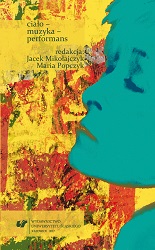
In humanitites, the issues connected with playing, and therefore performing music have always been an integral part of theoretical reflections and they have always occupied a place in the classification of academic fields, however the aim of the present publication is the conceptualization of the situation of the performer, in which case the conventions of reception and genre classification neutralize the reflection upon the bodily dimension of performance. For this reason, it seems vital to indicate, reveal, and name these theoretical barriers, and look at performance from the perspective of the musicalness of the body and the bodiliness of music. Music can be treated as an abstract entity, as was argued in the past by Boethius and Leibniz, and presently by cognitivists, however when it is being performed, the music gains materiality, while the audial nature of an individual realization of an abstract piece of music constitutes a significant component of the musical work as such. The performance entails the presence of the performer’s body, which becomes the element of the whole aesthetic experience. The axis of reflections contained in the articles gathered in the present volume, quite arbitrarily grouped into two mirrored parts, evolves therefore around the issues of, on the one hand, the musicalness of the performer’s body, and on the other, the bodiliness of performance. Looking at performance from the perspective of music and the body allows to revive our attitude towards the existing and historically described viewpoints on the performer’s body and provide a new insight into this issue. Such a formulation of the problem gives rise to a multitude of methodological outlooks, which in turn demonstrate a dichotomy of research tracks. Some of them will still treat the body as an instrument, others, by contrast, will pay attention to the symbiosis of consciousness and bodiliness; some will emphasize the audiality, others will stress the fusion of the audial and the visual. It is symptomatic that in each case the art of performing, as well as the works themselves, initiates similarly inspiring academic discussions.
More...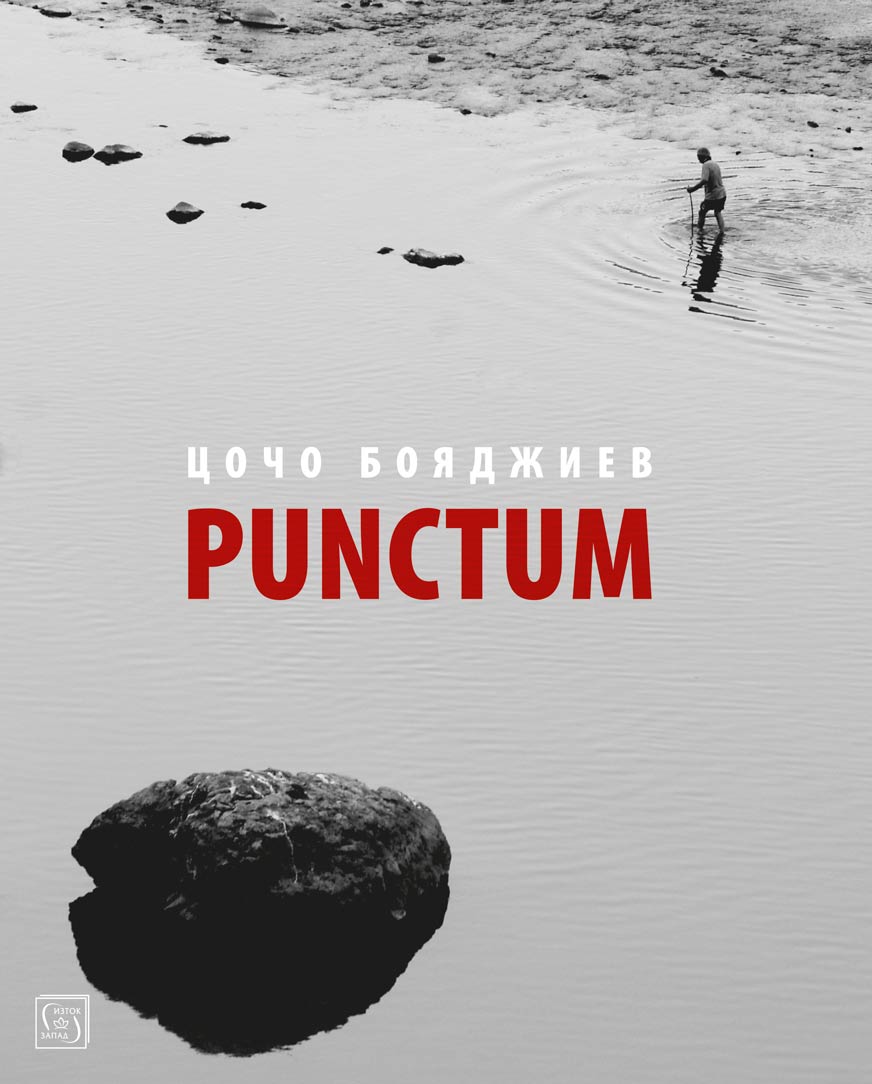
Here, in this album, Tzotcho Boiadjiev is a photographer. Good photographer, excellent photographer. But Tsocho Boyadjiev is not just a photographer. He is also a philosopher, a professor, a historian, theoretician of photography, a poet, a lecturer, an interpreter... Tsocho Boyadjiev transforms the crucial moments caught in reality into moments of determination, showing eternity of life, the freedom of life. With several techniques of photo-capture: parallels, intersections, branching, crossings, contrasts.
More...
This book examines the presence of folk material in and the influence of the New Objectivity on the „Mazurkas” op. 50 and op. 62 by Karol Szymanowski through various elements: rhythmic patterns, form, proportions, phrase structure, texture, accompaniment patterns, and articulation. Special emphasis is placed on the influence of the folk music practiced in the Highland region of the Tatra Mountains and its unquestionable presence in the „Mazurkas”. This dissertation dispenses with an analysis of the tonal system in the „Mazurkas”, a topic extensively covered in a thesis by Ann Kossakowski (Yale University, 1980). Chapter 1 discusses stylistic differences in Szymanowski’s works prior to the 1920s and beyond, as well as general trends in European music of that period. Chapter 2 focuses on the New Objectivity movement which is exemplified by the return to traditional forms and textures. Found in the works of Schoenberg, Stravinsky, and Hindemith, this new trend represents the search for a new direction reflective of Baroque and Classical models. The subsequent chapter is devoted exclusively to Polish folk music with distinctions drawn between Lowland and Highland folk styles and draws upon various examples of folk dances and songs. The main body of the book begins in Chapter 4, which is devoted to the analysis of the „Mazurkas”. A close look at the individual elements of the compositions highlights the remarkable way in which Szymanowski’s music manifests the New Objectivity in its texture, clear phrase structure, symmetrical proportions, and the rhythmic unity achieved through irregular accents typical of folk music. Chapter 5 explores the interpretive challenges a performer faces in the „Mazurkas” and examines each composition individually, analyzing the character and function of key elements: rhythmic patterns, articulation, and especially rubato. Szymanowski’s influence on modern Polish music and his contribution to later generations cannot be overstated and is the subject matter of the last chapter, followed by a summation in the conclusion.
More...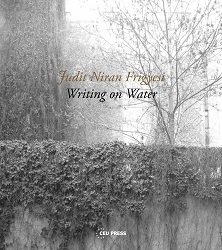
Writing on Water grasps the phenomenon of sound in prayer, that is, a meaning in sounds and soundscapes, and a musical essence in the act of praying.The impetus for the book arose from the author’s fieldwork among traditional Jews during the era of communism in Budapest and Prague. In that period the Jewish religion and Jewishness in general were supressed and rituals became semi-secret and turned inward. The book is a witness to these communities and their rituals, but it goes beyond documentation. The uniqueness of the sounds of the rituals compelled the author to try to comprehend how melodies and soundscapes became the sustaining/protective environment, as well as the vehicle, for the expression of a world-orientation—in a situation where open discourse was inconceivable.The book is based on extensive interviews, musical recordings, photographs and scholarly analyses. It is unique in its choice of communities, its wealth of original documents, and its novel interpretation of sound.Writing on Water is creative non-fiction. The presentation is evocative and poetic, but at the same time it transmits knowledge. The book can aid research and serve in courses in philosophy, religion, music, ethnomusicology, anthropology, aesthetics, Jewish studies, folklore, oral history, and performance studies. It is also a work of art and literature.
More...
The publication is devoted to the role played by the means of technical reproduction and the image transmission processes in promoting avant-garde concepts of art in the early decades of the twentieth century. Referring to Walter Benjamin’s thesis from the 1930s that photography and the availability of reproduction changed the modern concept of art by offering new artistic tools, the author seeks to explore how the use of reproduction influenced the new ways of art presentation and the development of an international network of artistic exchange.
More...
Cyberculture and critical studies on its history and its becoming a new cultural paradigm constitute one of the most important phenomena of technosociety, whose functioning is determined by new digital media and the internet. A fundamental thesis, specifying the direction of theoretical and interpretative efforts undertaken in the present work, is the conviction that cyberculture is based on the syntopia of art, science, and technology. However, before the definition of cyberculture is formulated, historical contexts of this phenomenon are outlined. The ideas of third culture and New Renaissance, put forward by John Brockman, are treated here as a theoretical basis for the forming of network society. Cyberculture should be considered as the conclusion of the processes initiated by countercultural performances in 1960s. Chapter Two broadly develops the concept of the syntopia of art, science, and technology. The art of technology and technologies of art refer to scientific background, as this phenomenon has its roots in the first manifestations of computer art in 1960s. After cyberculture has been defined in Chapter Three, the place of art in cyberspace and cyberculture is investigated in the following chapter. Chapter Five discusses the key forms of participation for cyber-art, i.e. the problems of interactivity (and interpassivity), immersion, and interface. Chapter Six is devoted to the theory and practice of documenting and presenting the art of digital media in the era of telematic and IT revolution. The key concepts that render the changing conditions of culture that used to be oriented towards data storage, and nowadays towards data transmission, are immateriality, metamediality, and networking. Archives with no physical location, web platforms taking over the function of art galleries, museums, libraries, and repositories set completely new standards of thinking about art in public circulation. The final chapter deals with the issue of virtual museums as a new territory of art, both the one that uses traditional media, as well as cyber-art. In the concluding part of the book, cyberculture is treated as a kind of revitalization of economy and the gift culture proclaiming a new revolution of everyday life in digital reality.
More...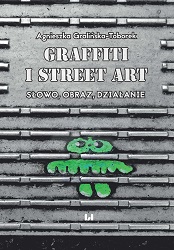
Street art is the most popular, dynamically evolving art form in the world today. It also has the largest audience. At the same time, it remains ephemeral, variable and limitless, and is subject to continuous processes of commercialization, institutionalization and mediatization. As a fruit of the remix culture, street art draws on everything that has already appeared in art: it mixes, transforms, copies and pastes. It cannot be easily defined, and the existing criteria for evaluating art seem inapplicable in its case. In no way should this imply, however, that street art cannot be analyzed. In the book, the author describes selected problems of street art and graffiti using both traditional and contemporary concepts, terminology and methods. She focuses on the relationship between word and image, on highlighting the invisible. The reader learns about street art in both its serious and comic manifestations. The author does not strive to exhaust the subject; on the contrary, she puts forward a preliminary reflection on this still unbridled and expansive form of artistic expression, thus initiating a discussion which the world of art will probably soon pick up.
More...

O ile nie sposób podać uniwersalnej definicji designu, o tyle codzienna praktyka osób zajmujących się projektowaniem poddaje się różnym opisom tożsamościowym. Trudno jednak wskazać obiektywne kryteria, które pozwoliłyby na przykład na dystynkcję określeń „designer” i „projektant” czy na opisanie warunków niezbędnych, by ten zawód wykonywać (co czyni designera/projektanta – jaki typ przygotowania, doświadczenia, wykształcenia?). Kłopotliwe jest też pytanie o cel i zakres czynności zawodowych (czy to projektowanie form przemysłowych, czy także projektowanie usług? Czy również design doświadczeń?). Zagadnienia te pociągają za sobą kolejne – dotyczące postrzegania projektantów w ramach szerszej struktury społecznej, a więc odnoszące się do kwestii uznania i prestiżu. Jeśli niemal wszystko można nazwać dziś designem i niemal każdego designerem, to oba te określenia właściwie nic nie znaczą. Świetnie więc, że Paulina Rojek-Adamek zajęła się zbieraniem argumentów, które przemawiają za szerokim (bądź przeciwnie – za bardziej restrykcyjnym) rozumieniem designu. (…) Dobrze, że jej rozważania na temat designu i tego, jaka jest (jaka powinna być) dziś rola projektanta nie są zawieszone w próżni. Z jednej strony nawiązują one do coraz bogatszej literatury autorów identyfikujących się z socjologią designu, z drugiej – wypływają z rezultatów zrealizowanego przez Autorkę projektu badawczego.prof. dr hab. Rafał DrozdowskiKsiążka ta jest na pewno pracą erudycyjną, w której uwzględnione zostały zarówno podejścia klasycznej socjologii, jak i współczesnych autorów. (…) Polskiemu czytelnikowi jak dotąd nie zaoferowano wielu prac podejmujących tę problematykę, tymczasem zarówno estetyka, jak i – w węższym ujęciu – praca projektowa są dzisiaj uznawane za kwestię centralną dla rozważań związanych z nową ekonomią, studiami miejskimi, „zwrotem ku rzeczom” czy sztuką publiczną. dr hab. Małgorzata JacynoPaulina Rojek-Adamek, doktor socjologii. W swojej pracy naukowo-badawczej i licznych publikacjach zajmuje się tematyką designu, szczególnie aspektem społecznie odpowiedzialnego projektowania i rolą zawodową projektantów. Publikowała m.in. w czasopismach Polish Sociological Review, Kultura Popularna, Humanizacja Pracy. Współredaktorka tomu Drafts from Sociology of Design. Introduction to Discussion (2016). Adiunkt w Instytucie Filozofii i Socjologii Uniwersytetu Pedagogicznego w Krakowie, od kilkunastu lat współpracuje również z Akademią Sztuk Pięknych w Katowicach.
More...
The Selected Texts include critiques, essays, and interviews that the art historian Nena Dimitrijević and the artist Braco Dimitrijević have published both in Croatia and foreign countries during their prolific period that has lasted more than forty years. The significance of this book surpasses the effort needed to collect, and translate this bulk of material. Having in mind that the authors’ carriers, whose success is almost a precendent in the Balkans, have been built upon the international art scene, the Croatian readers have not been familiar with most of their textst published in foreign countries. This book will be very useful for those who shape the reality and future of the domestic art context today. It offers testimonies by the creators and participants of the most significant art phenomena from the second half of the 20th century. It also presents a critical and creative model, and criteria for actively influencing the found structure of a cultural system, which the authors of the book have applied in their performance. In the end, the book offers retrospectively a method for the objective viewing and verification of the highly esteemed conceptual art period, especially the art of the Zagreb circle, with both of them being its valued protagonists. Nena and Braco Dimitrijević are an unusually well-balanced creative couple. Nena Dimitrijević’s curating and critical work is renowned because she has consistently promoted, in print, digital media and exhibitions, the radical strategies of the artists of her generation. She has conceptually and linguistically modernised the media of visual arts critique, and the exhibition practice. Braco Dimitrijević has established himself as one of the leading innovators on the contemporary global art scene with his famous artistic actions and projects that reflect his radical attitudes on the fundamental questions about the art creation and its position in society, that is, the relation of an individual and the political power, or an artist and cultural system. Braco Dimitrijević created his status also by his essential separation from the dominating theoretical, historical, cultural and civilisational models. Nena and Braco’s works overlap in their stance that the sense of the artwork is its cognitive and ethical dimensions, which, articulated into an aesthetic form, operate beneficially and constructively inside the artistic, and wider social discourses. Artists, critics, curators, institutions, and collectors have their distinctive roles in their respective missions. Although the Dimitrijevićs are often percieved as a pair of creative people who are directed toward each other, their separate careers, that of a successful artist, and a successful critic, show the development of the same theoretical standpoint in different areas of work.
More...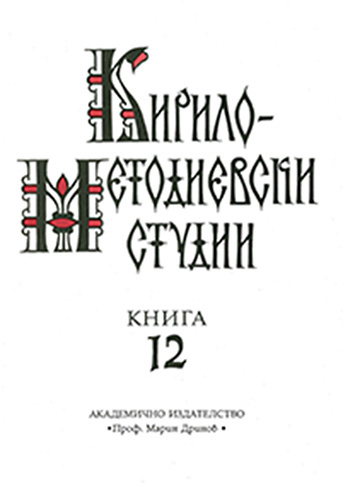
The study deals with the ornamentation – initials, head-pieces, tail-pieces and miniatures – in the Old Bulgarian manuscripts of the First Bulgarian Kingdom and the continuation of the same tradition in the manuscripts of the 11th century. This is the first specific study of the decoration of each of the preserved Bulgarian written monuments of the Early Middle Ages. For outlining the circle of models from which the Old Bulgarian copyists and miniaturists had drawn inspiration were used stylistic and iconographic parallels testifying to links above all with pre-iconoclastic art and the art of the eastern provinces of the Byzantine Empire. As a result of this are predated some manuscripts such as the "Savina Book", the Codex Suprasliensis and Dobromir's Gospel. For amplifying the picture were studied also the more recent Russian copies, which copied not only the text but also the ornamentation of the Old Bulgarian protographs, translated and decorated in the palace scriptorium of the Bulgarian King Simeon in Preslav in the 10th c. Moreover the subject has been specified of the four miniatures on a whole leaf before the two parts of the so-called Svetoslav's Florilegium, as depictions of the first four Ecumenical Councils. The study was the last scholarly work of Vera Mavrodinova, the chief director for many years of the excavtions in the first Christian Bulgarian capital of Preslav. It was completed in 1979 with the assistance of senior research associate Liliana Mavrodinova who tried to bring up to date to a certain degree some formulations.
More...
A study of the Old Testament subjects and personalities depicted in the mediaeval murals in today's Bulgarian lands. The development is followed up of the invested in them inner sense of the Old Jewish and Early Christian emphasis on God's might, omnipotence, on the new Christian symbolism reflected in the liturgical rite – the typological link between the two Testaments: the Old as the "Entrance" to the New and respectively, the Old Testament subjects and prophecies as the prefigurations of the basic events of the New Testament: the coming of the Messiah, i. e. the incarnation of God-the-Word, the Eucharistic sacrifice – symbol of the redemption of the sins by the Saviour and the Last judgement. The first part of the article is dedicated to the scenes from the Old Testament on the walls of mediaeval churches. By Byzantine masters are painted the earliest murals in "The SS Archangels" in Kastoria. As an example of official Byzantine typology are examined those in "St. Sophia" in Ohrid, commissioned by the Byzantine archbishop Leo in the 11th c.; in the Bachkovo ossuary, as well as the Bulgarian monuments: the "SS Forty Martyrs of Sebaste" in Turnovo, the "Archangel Michael" chapel in the monastery of the same name at Ivanovo, the chapel in Hrelju's Tower at Rila Monastery, the churches "St. Dimiter" in Patalenitsa, in Lyutibrod, in Zemen, "St. Marina" near Karlukovo, etc. In the second part are considered the images of prophets carrying scrolls withe the texts of their prophecies for the principal events in the New Testament. The inscriptions have been made out and specified on the scrolls of most of the prophets in the church of Zemen, the church "St. Peter" in Berende and the layers of the 12th and the 14th centuries in the "St. George" old church in Sofia, the majority of which had so far not been deciphered.
More...